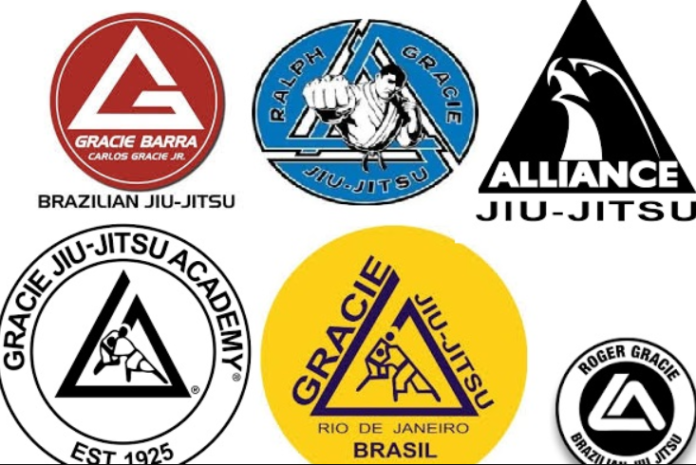
Jiu-Jitsu is a martial art that originated in Japan and was adapted and developed by the Gracie family in Brazil. It is a grappling-based art that uses leverage, technique, and strategy to control and submit an opponent. Jiu-Jitsu can be practiced for self-defense, sport, fitness, or fun. But not all schools of Jiu-Jitsu are the same.
There are different types of schools that have different histories, lineages, curricula, philosophies, competition levels, and affiliations. Depending on your goals, preferences, and budget, you want to choose a Jiu-Jitsu school that suits you best.
In this article, we will compare different types of schools of Jiu-Jitsu and their respective teaching styles, philosophies, and directions. We will also give you some tips on what to look for when you are new to BJJ or when you want to change academies.
How Are The Most Famous Schools Of Jiu-Jitsu Different?
Here are some of the most common types of schools of Jiu-Jitsu that you can find around the world, based on their reach, success in competition, their range in terms of affiliated schools, teachers and competitors on a global level, as well as the quality of their classes:
Gracie University
This is the original and most traditional form of Brazilian Jiu-Jitsu, developed by the Gracie family in Brazil. This school emphasizes self-defense, survival, and street-fighting scenarios.
Some of the features of this school are:
- It follows a standardized curriculum that covers all aspects of Jiu-Jitsu, from basic techniques to advanced strategies.
- The School teaches both Gi and No-Gi Jiu-Jitsu, as well as striking and weapons defense.
- There is a global network of certified instructors and affiliates that follow the Gracie philosophy and methodology.
- It offers online courses and videos through Gracie University and Gracie Academy.
10th Planet Jiu-Jitsu
This is a modern and (for some) controversial style of BJJ, created by Eddie Bravo, a student of Jean Jacques Machado. This school specializes in No-Gi grappling, flexibility, and creativity, often encouraged by smoking cannabis for creative sparks in training.
Here is why the 10th Planet Jiu-Jitsu school is so unique compared to others:
- It has a unique and innovative curriculum that covers all aspects of No-Gi grappling, with positions specific to this system alone, like the Truck, Twister, Rubber Guard, etc.
- 10th PLanet is an exclusive No-Gi only Jiu-Jitsu school. They are, however, open to innovation and include lots of elements from other grappling martial arts like wrestling, judo, sambo, catch wrestling, etc.
- Similarly to the other schools of Jiu-Jitsu in this article, 10th Planet Jiu-Jitsu has a global network of instructors and affiliates that follow the schools’ philosophy, curriculums, and methodology.
- It has produced many successful grapplers and MMA fighters, such as Tony Ferguson, Geo Martinez, Grace Gundrum, Vinny Magalhaes, etc.
Atos Jiu-Jitsu
A powerhouse of BJJ talent and innovation, founded by Andre Galvao and Ramon Lemos. This school combines high-level technique with physical conditioning and mental toughness.
The Atos Jiu-Jitsu no-nonsense approach to BJJ includes:
- There is a comprehensive and dynamic curriculum that covers all aspects of BJJ, focusing on sports competition, and ranging from fundamentals to advanced techniques.
- Atos produces both Gi and No-Gi Jiu-Jitsu champions, as well as MMA fighters. They have particularly strong kids and youth programs.
- Not surprisingly, Atos also has a very wide global network of trainers and affiliates that follow the Atos team philosophy with many competitors choosing to affiliate with this popular sports competition-focused school.
- Some of the main “exports” of this school of Jiu-Jitsu are many world champions and legends of BJJ, such as Andre Galvao, Keenan Cornelius, JT Torres, Lucas Barbosa, the Ruotolo Brothers, and many more.
Checkmat Jiu-Jitsu Team
This is a global network of BJJ academies and affiliates, founded by Leonardo Vieira and his brother Ricardo Vieira. This school promotes a friendly and supportive environment for learning and training BJJ.
Some of the defining traits of this school are:
- It has a diverse and adaptable curriculum that covers all aspects of BJJ, from self-defense to sports competitions.
- They offer both high-level Gi and No-Gi BJJ, as well as mixed martial arts classes.
- Their affiliation also includes schools and instructors around the world, with many competitors opting for this school’s competitive training approach as opposed to other competitor dens like Atos.
- A few of the world champions to come out of this academy are greats such as Marcus Buchecha Almeida, Michelle Nicolini, Lucas Leite, Luiz Panza, etc.
Gracie Barra
This is a worldwide community of BJJ instructors, students, and athletes, founded by Carlos Gracie Jr., a son of Carlos Gracie Sr. This school teaches Jiu-Jitsu as a lifestyle and a way to improve one’s health, fitness, confidence, and respect.
Operating under the motto “Jiu-Jitsu is for everyone” this school’s principles include:
- The use of a standardized curriculum that covers all aspects of Jiu-Jitsu, from basic techniques to advanced strategies.
- It teaches both Gi and No-Gi Jiu-Jitsu, as well as striking defense, and BJJ-focused self-defense.
- Gracie Barra’s global network has the biggest reach of all schools of Jiu-Jitsu, with certified instructors and affiliates following the creed, from the dress code to the way classes are run, spread all around the world.
- It offers online courses and videos through Gracie Barra Online, for both students and professors of all ages.
- Some high-level representatives of Gracie Barra are Aj Agazarm, Edwin Najmi, Gabriel Arges, the late Orlando Sanchez, Felipe Pena, and others.
New Wave Jiu-Jitsu
A revolutionary BJJ grappling gym that was formed by John Danaher and Gordon Ryan after the breakup of the Danaher Death Squad. This school follows a new philosophy of positional and submission approach that challenges the conventional wisdom of BJJ.
One of the very best Jiu-Jitsu schools in the world in, New Wave offers the following unique features:
- New Wave has the most in-depth and quickly applicable, amazing curriculum that covers all aspects of No-Gi grappling, especially submissions like leg locks and chokes from the back, as well as extremely strong positional pins.
- The school teaches primarily No-Gi Jiu-Jitsu. incorporating elements from all other martial arts and fighting styles. They are also well-versed in Gi BJJ, but are not known for producing competitors in that discipline.
- The New Wave Academy has no known affiliates as it is fairly new, and since it is run by John Danaher himself, any affiliated school without him in it wouldn’t make much sense.
- It has produced some of the best grapplers in the world, such as Gordon Ryan, Garry Tonon, Nicholas Meragali, Giancarlo Bodoni, etc. There is a whole new generation of men and women killer competitors currently brewing at this school of Jiu-Jitsu.
B-Team Jiu-Jitsu
One more offshoot of the Danaher Death Squad led by Craig Jones and Nick Rodriguez. This school represents a new generation of BJJ grapplers who are fearless, creative, and versatile.
Here’s what B-team has to offer:
- A diverse and dynamic curriculum that covers all aspects of No-Gi grappling, especially leg locks, back attacks, and lots of wrestling.
- While the focus is on No-Gi Jiu-Jitsu, elements from wrestling, judo, sambo, catch wrestling, and MMA are also blended in.
- B-Team is another young academy that still has no affiliates and is only as strong as its headquarters in Austin, Texas.
- It has produced some of the best grapplers in the world, such as Nicky Ryan, Craig Jones, Ethan Crelinsten, Nick Rodriguez, etc.
Marcelo Garcia Jiu-Jitsu Academy
This is one of the most respected and admired schools of Jiu-Jitsu in the world, founded by Marcelo Garcia, a five-time world champion and four-time ADCC champion. This school focuses on technical excellence, efficiency, and simplicity.
Marcelo’s approach is unique and what his schools offer mirrors that:
- A clear and concise curriculum that covers all aspects of Gi and No-Gi grappling, especially butterfly guard, x-guard, single-leg x-guard, guillotines, back attacks, etc.
- The academy offers both Gi and No-Gi classes, as well as MMA training.
- There are many Marcelo Garcia affiliates around the world, offering training in accordance with the school’s methodology.
- Through the “Marcelo Garcia In Action” online library this school of Jiu-Jitsu also offers online classes and coaching.
- Many champions call the MG Academy home, like Matheus Diniz, Jonathan Satava, Marcos Tinoco, and everyone’s favorite misfit Dillon Danis.
Renzo Gracie Academy
This is one of the most renowned and influential schools of Jiu-Jitsu in the world, founded by Renzo Gracie, a grandson of Carlos Gracie and a nephew of Helio Gracie. This school combines tradition and innovation, self-defense and sport, Gi, and No-Gi.
The famous Renzo Gracie blue basement in NYC (and all their affiliates) focus on:
- A structured approach to BJJ, utilizing well-organized curriculums taught by a huge team of very competent coaches.
- A balance between Gi and No-Gi classes, as well as self-defense training and an MMA program.
- Affiliates that follow the Renzo Gracie philosophy and methodology are all around the world.
- Household BJJ champions and UFC fighters, the likes of John Danaher, Matt Serra, Georges St-Pierre, Karel Pravec, Gianni Grippo, Shawn Williams, etc.
Alliance Jiu-Jitsu
This is one of the most successful and influential teams in BJJ history, founded by Romero “Jacare” Cavalcanti, a student of Rolls Gracie. This school focuses on sports competition, innovation, and excellence.
What sets Alliance BJJ apart is the following:
- It has high-level technical instruction that covers all aspects of modern BJJ competition training and preparation.
- At Alliance, they focus mainly on Gi Jiu-Jitsu, but also tech No-Gi classes and MMA training.
- It has a global network of coaches and affiliates representing the strong Alliance team in tournaments and events.
- Many world champions and legends of BJJ have come out of this school of Jiu-Jitsu, such as Fabio Gurgel, Marcelo Garcia, Lucas Lepri, Cobrinha, Bruno Malfacine, etc.
Before joining Alliance Jiu-Jitsu make sure they are a registered Alliance academy on their website because there are a lot of fake alliance academies flying under the radar in the world right now.
How To Pick The Best School of Jiu-Jitsu For You
Now that you have an idea of what types of schools of Jiu-Jitsu are out there, how do you choose the best one for you? Here are some tips to help you make an informed decision:
#1. Define your goals: What do you want to achieve with Jiu-Jitsu? Do you want to learn self-defense, compete in tournaments, get in shape, have fun, or all of the above? Depending on your goals, you may want to choose a BJJ academy that specializes in what you are looking for, or offers a balanced and comprehensive program that covers all aspects of Jiu-Jitsu.
#2. Consider your preferences: What kind of Jiu-Jitsu do you enjoy more? Do you prefer Gi or No-Gi, traditional or modern, sport or street, technical or physical, etc.? You want to focus on schools of Jiu-Jitsu that match your style and personality or offer a variety and diversity that keeps you interested and challenged.
#3. Check your budget: How much can you afford to spend on Jiu-Jitsu? Do you have a monthly or yearly budget, or are you willing to invest as much as possible? Your best option is to pick an academy that offers reasonable and affordable prices or look to make the most out of discounts and scholarships.
#4. Do your research: How can you find out more about the schools of Jiu-Jitsu in your area? Do you have friends or acquaintances who train there, or can you find online reviews and testimonials? A school of Jiu-Jitsu that has a good reputation and feedback or offers a free trial class or consultation for you to see for yourself is always a smart choice.
#5. Visit the schools: How can you get a feel for the schools of Jiu-Jitsu that interest you? Do you have time and opportunity to visit them in person, or can you watch online videos and photos? Rate cleanliness and facility safety, how friendly and professional the staff is, gauge the atmosphere, and consider the quality of instruction and training.
How To Change Schools Of Jiu-Jitsu
Sometimes, you may find yourself in a situation where you want to change schools of Jiu-Jitsu. Maybe you moved to a different location, maybe you outgrew your current BJJ school, maybe you had a conflict or disagreement with someone there, or maybe you just want to try something new. Whatever the reason, changing schools of Jiu-Jitsu can be a difficult and delicate process.
All you need to do is talk. Here’s how and with whom:
#1. Communicate with your current instructor: How can you inform your current instructor of your decision to change schools? Do you have a good relationship with him or her, or do you have some issues or problems? Whatever the case, be sure to tell your coach in person, by phone, by email, or by letter.
You may want to explain your reasons for leaving, thank him or her for everything they taught you, express your gratitude and appreciation, and ask for their blessing and permission.
#2. Communicate with your current teammates: Do you have many friends and connections there, or do you keep to yourself? Depending on your communication, you may want to tell your training partners in person, or by social media, for example. You don’t always have to point out the reasons for leaving.
#3. Communicate with your new instructor: Introduce yourself to your new instructor at the BJJ academy that you want to join. Visiting a school prior to signing up is a great idea, as stated above. Discuss whether you have any references or recommendations from someone who knows him or her, or are starting from scratch.
#4. Communicate with your new teammates: Do you have any friends or acquaintances there, or do you have to make new ones? Make sure to introduce yourself, talk, ask, and ease into the atmosphere at the new school. Keep in mind it may be significantly different from what you are used to.
You can explain your background and experience in Jiu-Jitsu, state your goals and expectations, and ask for their experiences and advice.
Conclusion
Brazilian Jiu-Jitsu is a martial art that can offer many benefits and rewards to anyone who practices it. However, not all schools of Jiu-Jitsu are the same. There are different types of BJJ schools that have different histories, lineages, curricula, philosophies, competition levels, and affiliations. Depending on your goals, preferences, and budget, you may want to choose a BJJ school that suits you best.
In this article, we compared different types of schools of Jiu-Jitsu and their respective teaching styles, philosophies, and directions. We also gave you some tips on what to look for when you are new to BJJ or when you want to change schools.


![Darce Choke Encyclopedia – Origins, Mechanics and Variations [2025] BJJ, choke, Brabo, BJJ Darce Choke, D'arce Choke, Darce BJJ Choke](https://bjj-world.com/wp-content/uploads/2017/11/JungPoirierLeeYahoo-218x150.jpg)







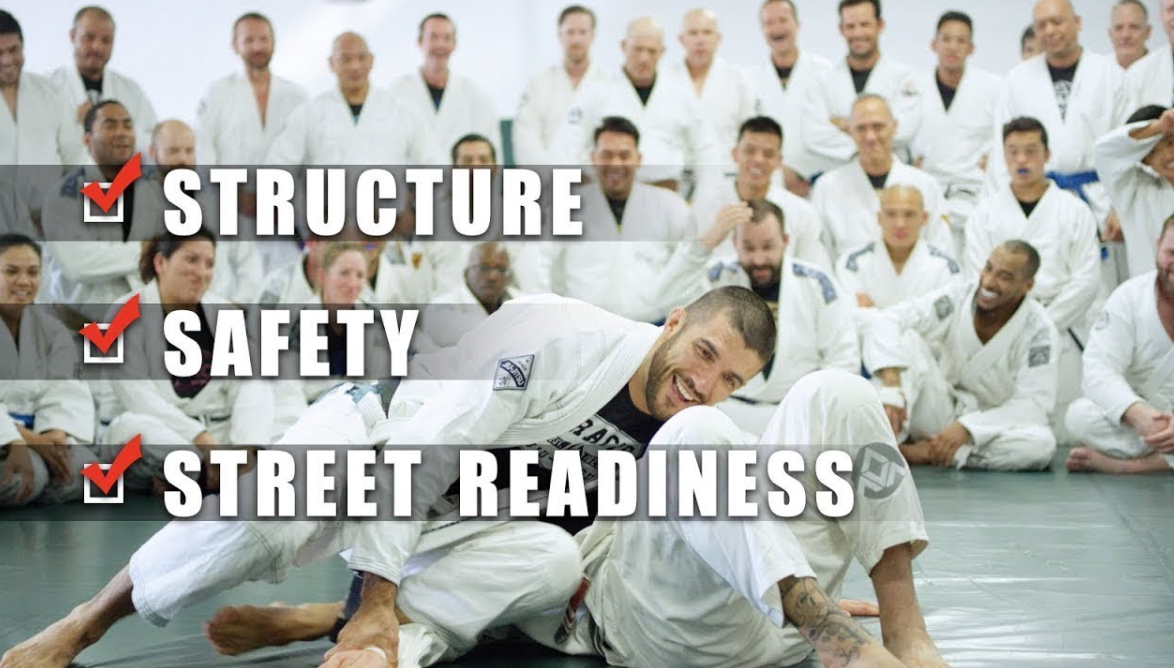
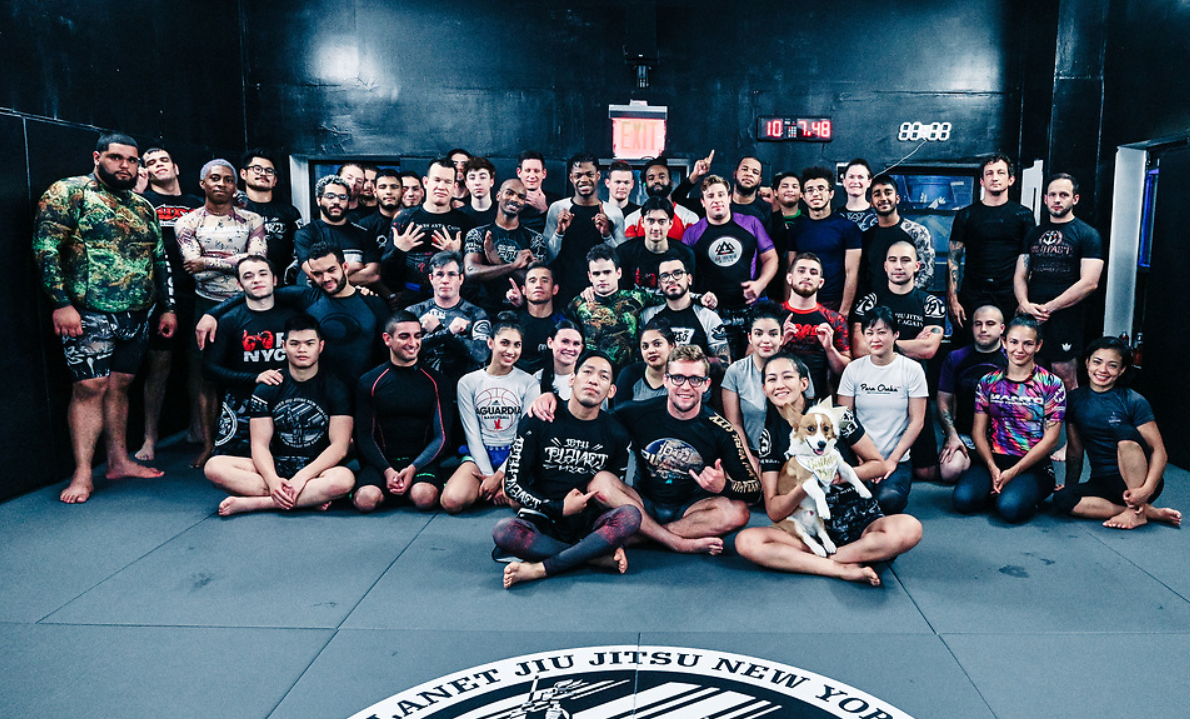
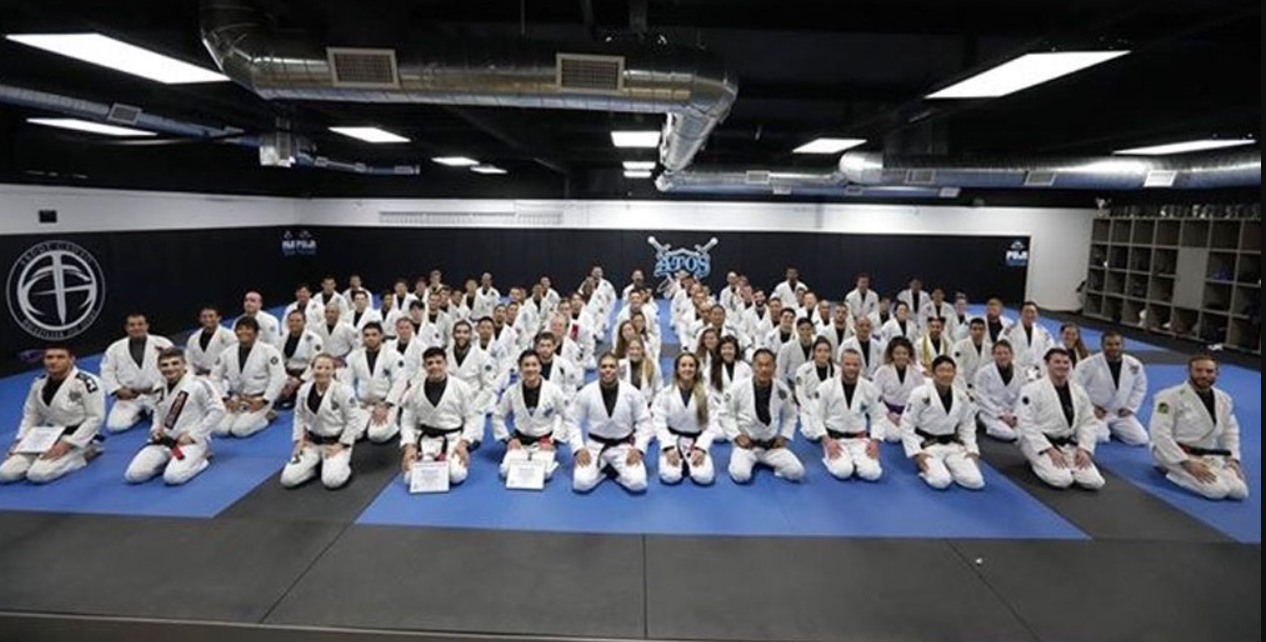
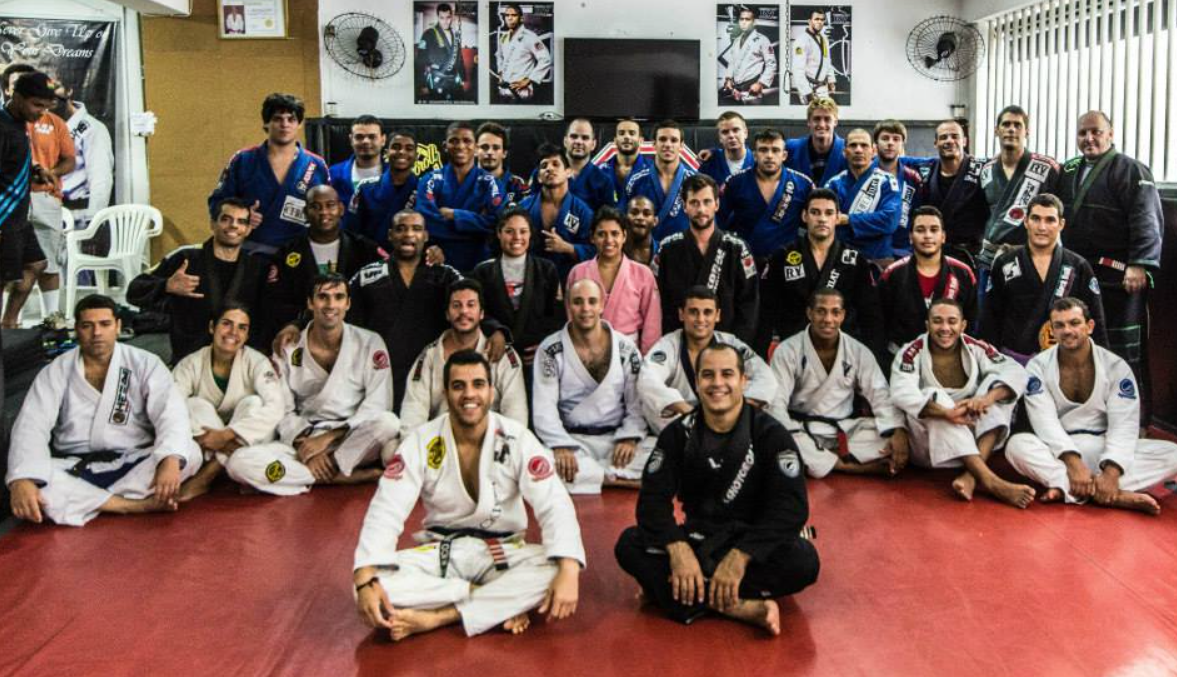
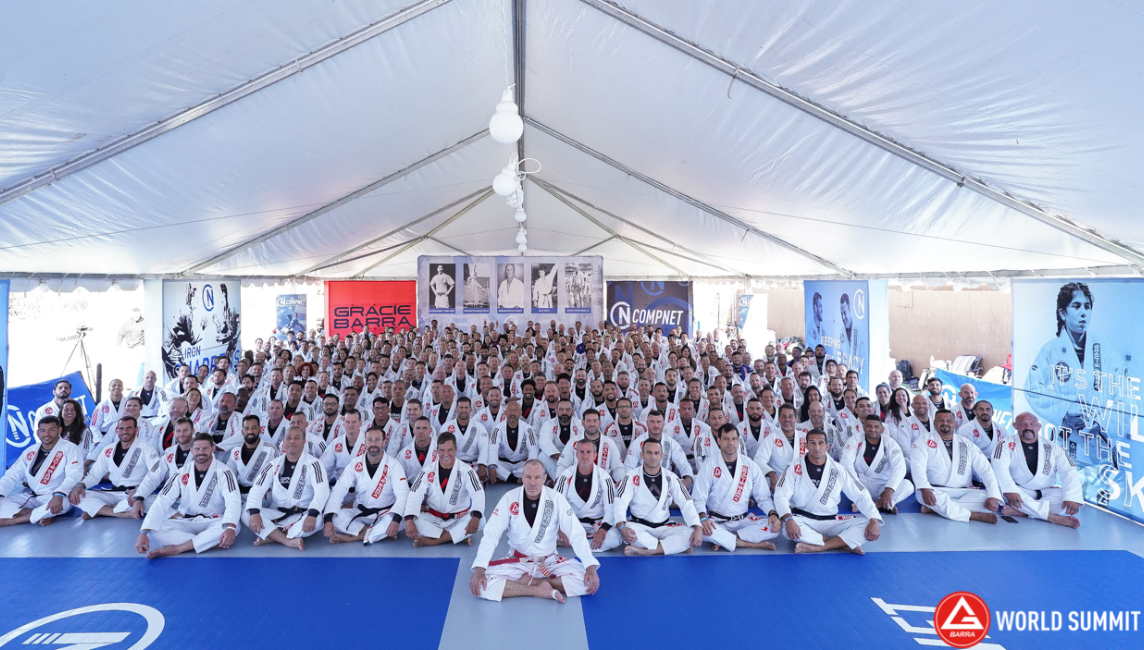
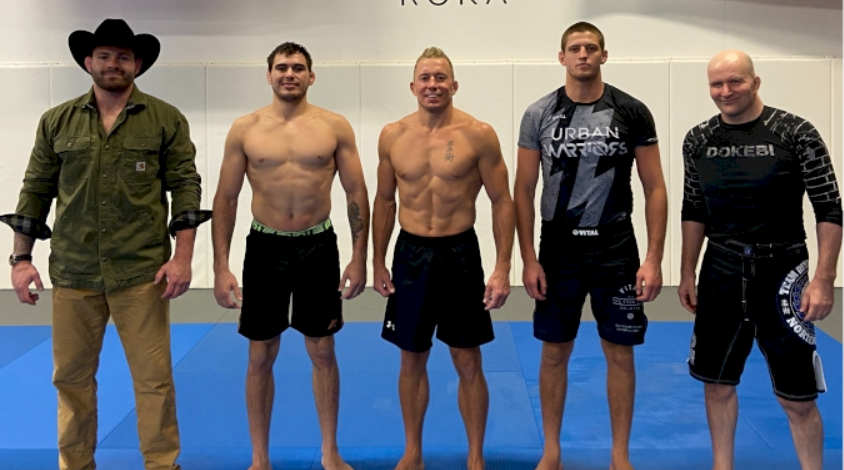
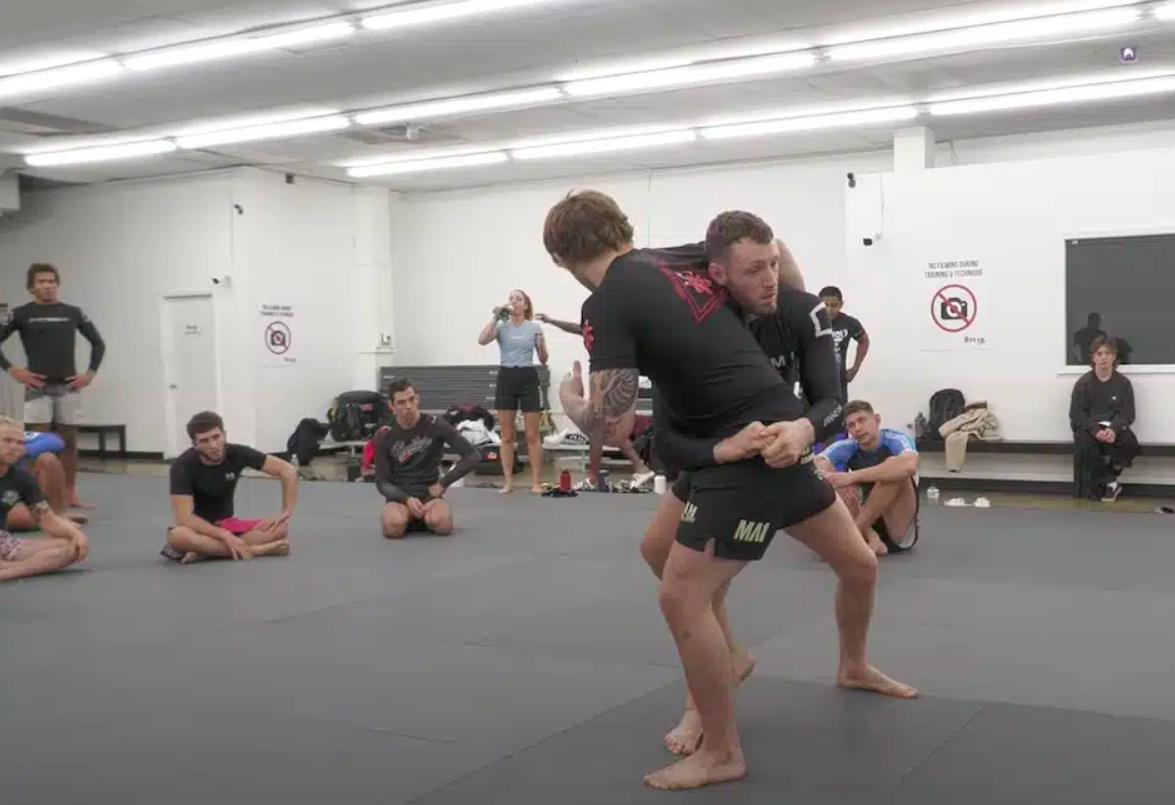
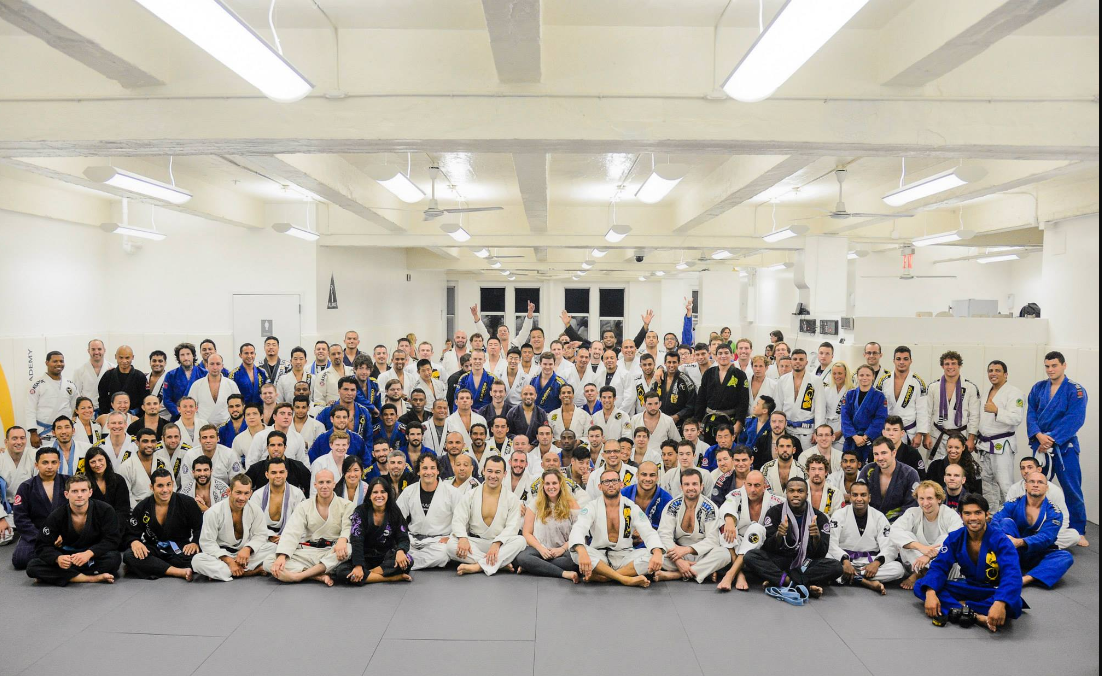
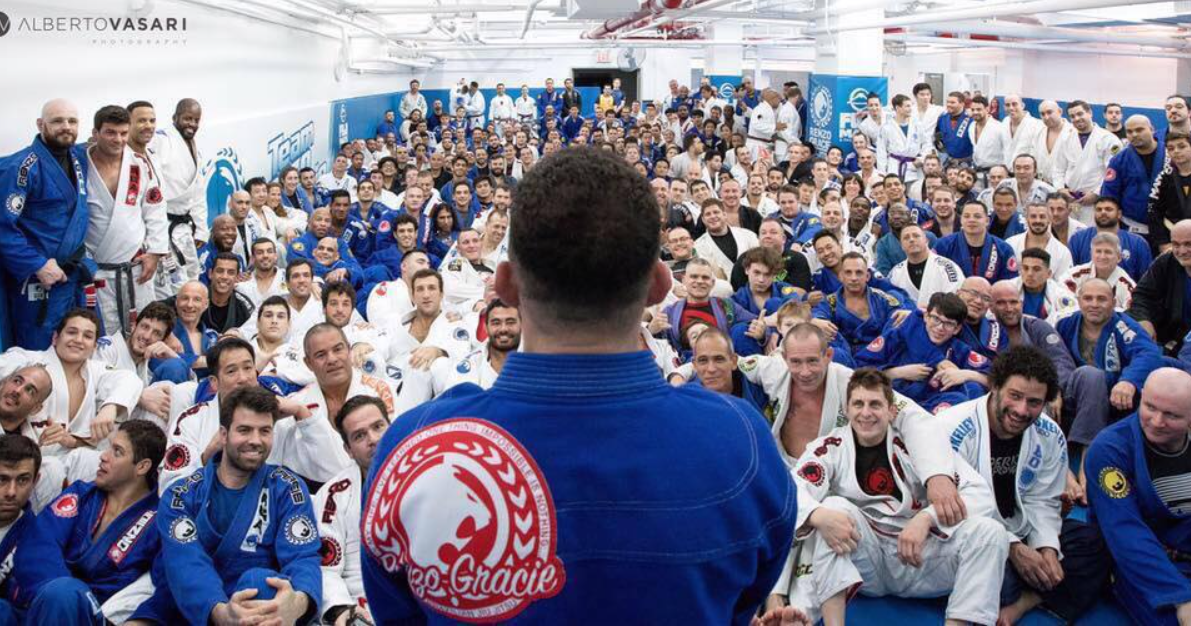
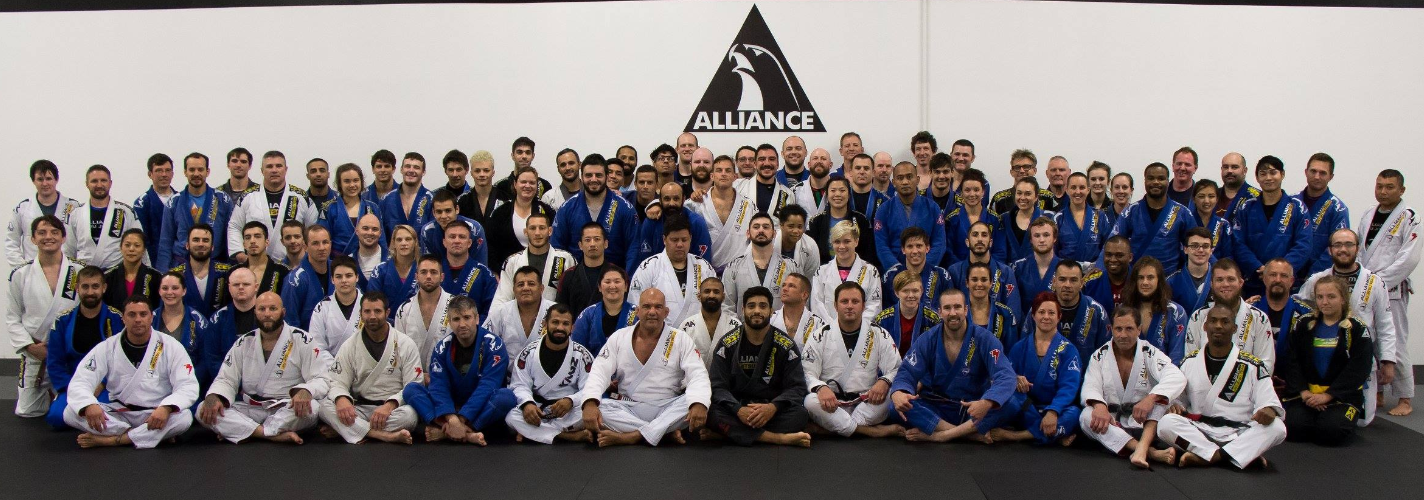
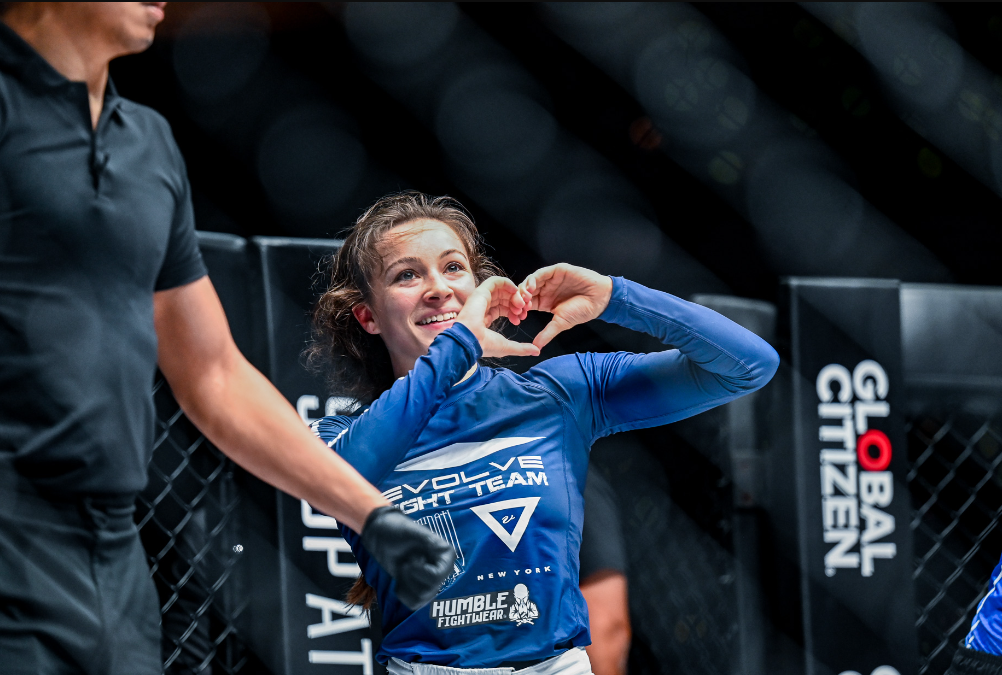


![Countering with Crab Ride Anthony Budion DVD Review [2025] Countering with Crab Ride Anthony Budion DVD Review](https://bjj-world.com/wp-content/uploads/2025/03/countering-with-crab-ride-anthony-budion-dvd-review-218x150.png)
![Closet Closed Guard Craig Jones DVD Review [2025] Closet Closed Guard Craig Jones DVD Review](https://bjj-world.com/wp-content/uploads/2025/03/closet-closed-guard-craig-jones-dvd-review-218x150.png)
![Xanadu Back Takes Levi Jones-Leary DVD Review [2025] Xanadu Back Takes Levi Jones-Leary DVD Review](https://bjj-world.com/wp-content/uploads/2025/03/xanadu-back-takes-levi-jones-leary-dvd-review-218x150.png)

![No-Gi Grapplers Guide To Front Headlock Joel Bane DVD Review [2025] No-Gi Grapplers Guide To Front Headlock Joel Bane DVD Review](https://bjj-world.com/wp-content/uploads/2025/03/no-gi-front-headlock-joel-bane-dvd-review-218x150.png)



![No-Gi Open Guard K-Guard Lachlan Giles DVD Review [2024] No-Gi Open Guard K-Guard Lachlan Giles DVD Review](https://bjj-world.com/wp-content/uploads/2024/12/no-gi-open-guard-k-guard-lachlan-giles-dvd-review-100x70.png)

![Underhooks With Uncle Jeff Glover DVD Review [2025] Underhooks With Uncle Jeff Glover DVD Review](https://bjj-world.com/wp-content/uploads/2025/02/underhooks-with-uncle-jeff-glover-dvd-review-100x70.png)


![Jeff Glover Deep Half Revolution DVD Bundle Review [2024] Jeff Glover Deep Half Revolution DVD Bundle Review](https://bjj-world.com/wp-content/uploads/2024/10/jeff-glover-deep-half-revolution-dvd-bundle-review-100x70.png)


![Front Headlock and Turtle Escapes Brian Glick DVD Review [2024] Front Headlock and Turtle Escapes Brian Glick DVD Review](https://bjj-world.com/wp-content/uploads/2024/11/headlock-and-turtle-escapes-brian-glick-dvd-review-100x70.png)

![Countering with Crab Ride Anthony Budion DVD Review [2025] Countering with Crab Ride Anthony Budion DVD Review](https://bjj-world.com/wp-content/uploads/2025/03/countering-with-crab-ride-anthony-budion-dvd-review-100x70.png)

![Guard Busters Bill Cooper BJJ DVD Review [2025] Guard Busters Bill Cooper BJJ DVD Review](https://bjj-world.com/wp-content/uploads/2025/03/guard-busters-bill-cooper-bjj-dvd-review-100x70.png)
![Complete Fundamentals Curriculum Eliot Marshall DVD Review [2025] Complete Fundamentals Curriculum Eliot Marshall DVD Review](https://bjj-world.com/wp-content/uploads/2025/02/fundamentals-curriculum-eliot-marshall-dvd-review-100x70.png)

![Roger Gracie Guard Passing System DVD Review [2025] Roger Gracie Guard Passing System DVD Review](https://bjj-world.com/wp-content/uploads/2025/02/roger-gracie-guard-passing-system-dvd-review-100x70.png)

![The Rack Kyle Watson BJJ DVD Review [2025] The Rack Kyle Watson BJJ DVD Review](https://bjj-world.com/wp-content/uploads/2024/12/the-rack-kyle-watson-bjj-dvd-review-100x70.png)
![Intro To Hip Mobility for Guard Players Joshua Presley DVD Review [2024] Intro To Hip Mobility for Guard Players Joshua Presley DVD Review](https://bjj-world.com/wp-content/uploads/2024/09/hip-mobility-for-guard-joshua-presley-dvd-review-100x70.png)
![Closed Guard Reintroduced Adam Wardzinski DVD Review [2025] Closed Guard Reintroduced Adam Wardzinski DVD Review](https://bjj-world.com/wp-content/uploads/2025/01/closed-guard-reintroduced-adam-wardzinski-dvd-review-100x70.png)

![Jeff Glover DVD Bundle Review: Chokin’ Around With Uncle Jeff [2024] Jeff Glover DVD Bundle Review: Chokin' Around With Uncle Jeff](https://bjj-world.com/wp-content/uploads/2024/10/jeff-glover-dvd-bundle-review-chokin-around-100x70.png)

![Master The Move The American Lock John Danaher DVD Review [2024] Master The Move The American Lock John Danaher DVD Review](https://bjj-world.com/wp-content/uploads/2024/12/the-american-lock-john-danaher-dvd-review-100x70.png)

